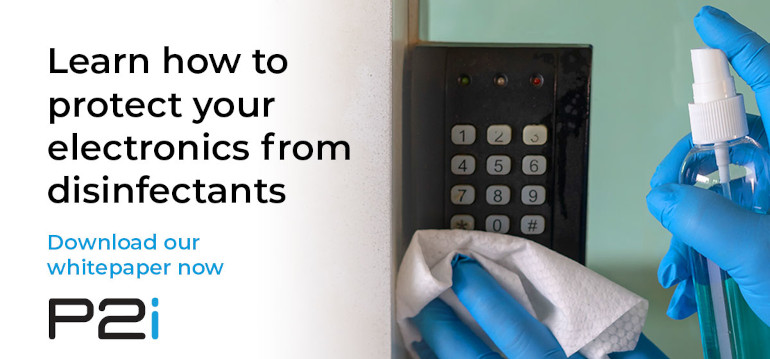In This Whitepaper
We have tested the best of commercially available solutions for OEMs to protect their devices against frequent cleaning from a variety of chemicals and share our findings, including the results when we put our own solutions to the test. For all the full facts and figures and to find out more, download the whitepaper :
The Impact of COVID-19 and Regular Cleaning
In an increasingly health conscious world, there has been an inevitable change in consumer behaviour in terms of tech hygiene. 92.9% of participants’ phones in a study by the Journal of Preventative Medicine and Hygiene were contaminated with bacteria from their hands, highlighting the importance of keeping devices clean, particularly in recent months where the Covid-19 virus has been shown to live on these surfaces and potentially infect users.
But this is an issue that impacts more than just smartphone users: In fact any electronic device that consumers regularly touch, and more specifically, where there is a likelihood of multiple consumers coming into contact, is at risk of contamination.
The good news is that disinfectants such as gel-alcohol are effective in reducing bacterial colonisation and inactivating coronaviruses that live on surfaces. But with an increase in regular cleaning with wet agents, comes greater risk of damage caused by liquid exposure and thus a need to sufficiently protect a device from damage.
The importance of liquid protection
Since the start of the COVID pandemic, 25% of electronic product designers surveyed in a P2i study said that liquid protection was being more frequently requested in their product designs due to increased demand, and importantly, 83% said that any device without liquid protection would fail within a year.
The Science of Liquid Damage from Cleaning Agents
The science behind how most cleaning agents work highlights the potential damage that can be done to an unprotected device.
In alcohol-based disinfectants, the high polarity of the alcohol along with impurities in the water present in the solution leads to a high level of water conductivity to a device, resulting in problems for unprotected devices. Acid-based disinfectants, while mainly made up of water, also contain enough acid to potentially lead to corrosion damage and dendrite formation within an unprotected device.
Residual water from both disinfectants can penetrate gaps and openings in devices and reach internal components, ultimately leading to a short circuit. The broken device is then binned, adding to environmentally damaging levels of electrical waste.
To Find Out More, Download The Whitepaper Now:

